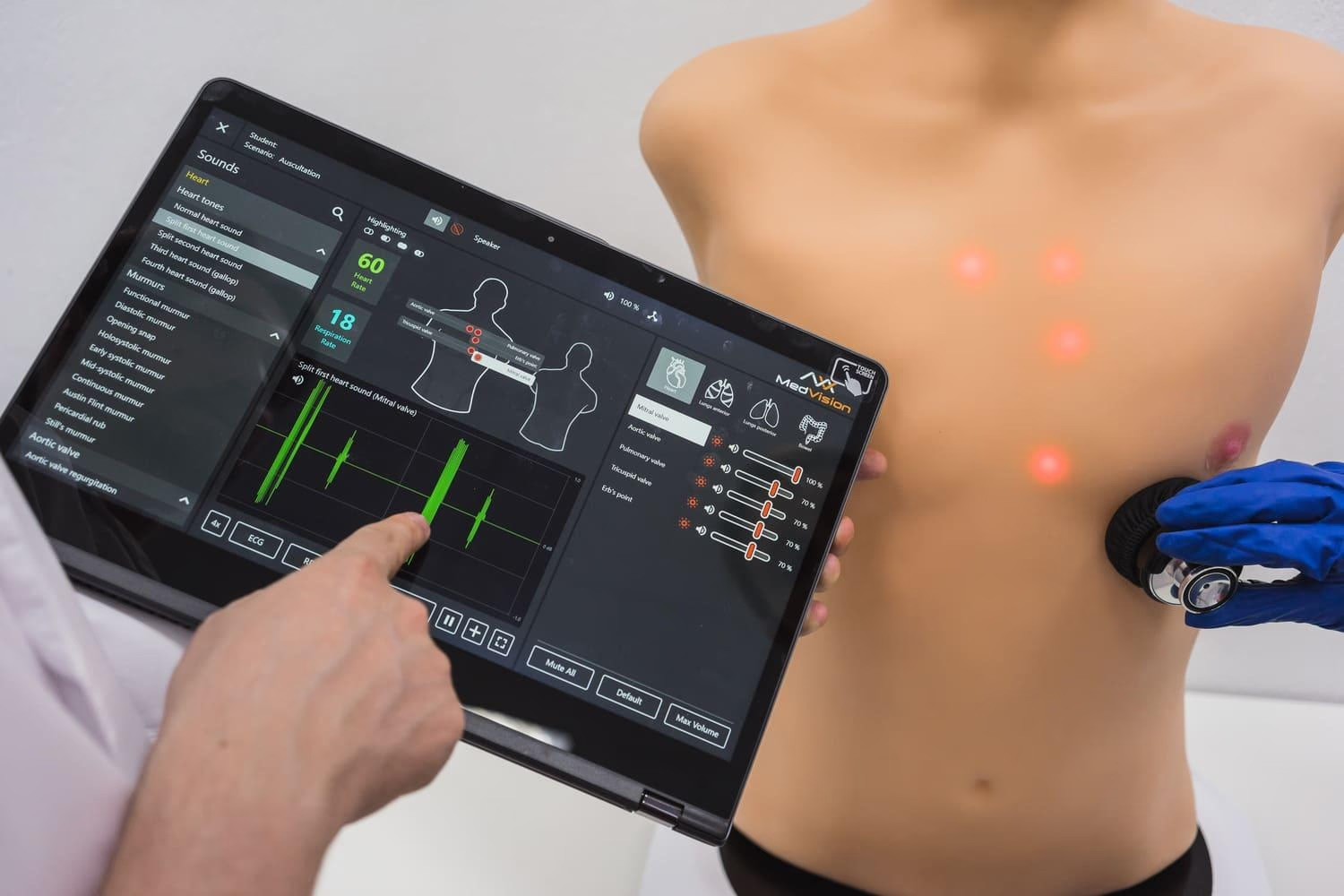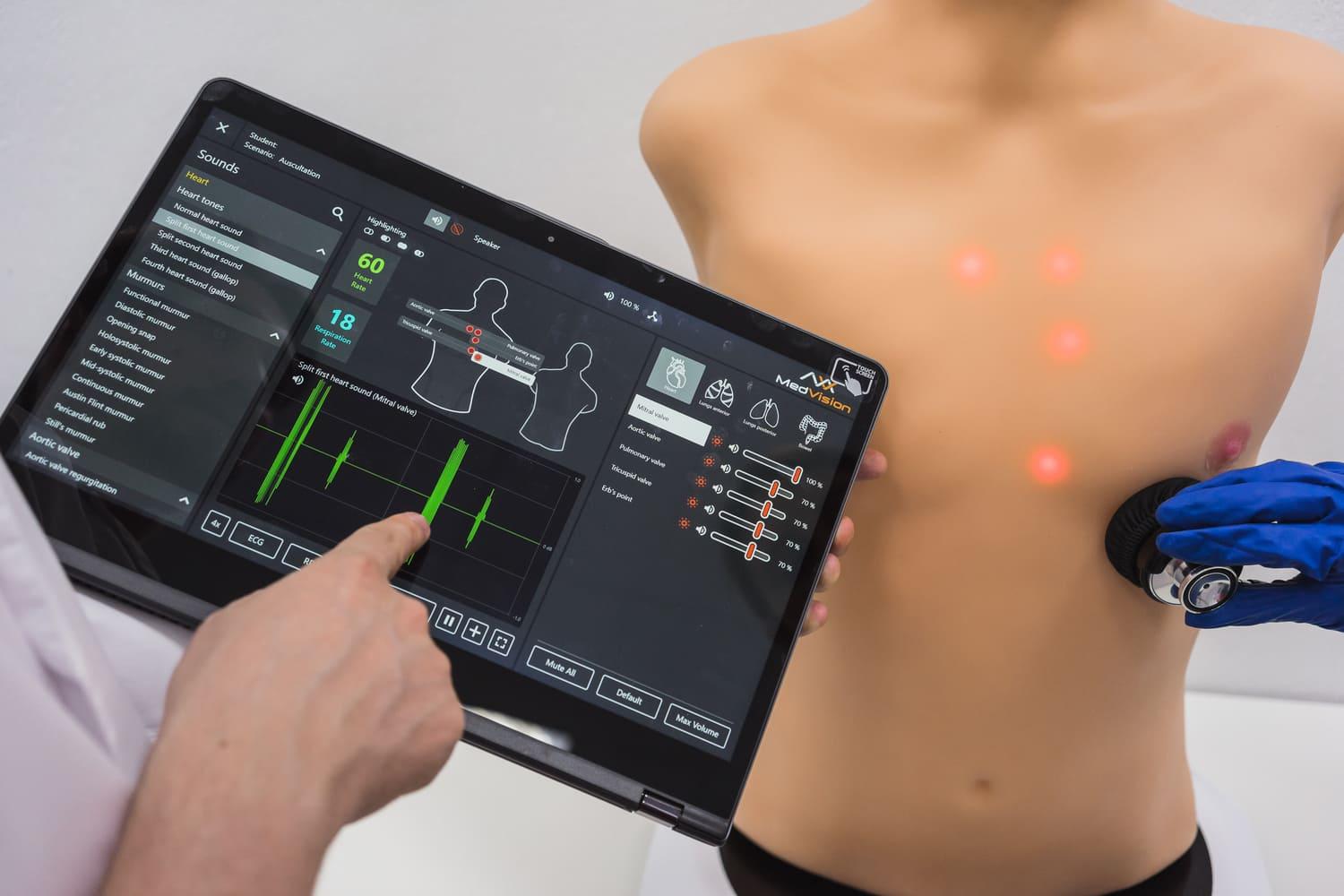
High Fidelity Simulators by MedVisionSim: Precision, Innovation, and Transformative Medical Training
What Is a High Fidelity Simulator? Redefining Realism in Medical Training
High fidelity simulation is a sophisticated educational methodology that replicates human physiology and clinical scenarios with precise realism, enabling trainees to practice diagnostics, interventions, and decision-making in a controlled, risk-free environment.
A high fidelity simulator transcends traditional training tools by replicating human physiology and pathology with extraordinary precision. The high fidelity simulation definition refers to this advanced methodology, which integrates realistic patient responses and clinical scenarios to provide trainees with a controlled, risk-free environment for practicing diagnostics, interventions, and decision-making. These systems integrate high fidelity manikins, adaptive software, and multisensory feedback to emulate lifelike clinical scenarios. Unlike static models, high fidelity patient simulators exhibit dynamic responses — such as pupillary dilation, audible breath sounds, and palpable pulses — enabling trainees to practice diagnostics, interventions, and critical decision-making in controlled environments.
MedVisionSim’s proprietary technology, exemplified by the MedVisionSim ProSeries, elevates experiential learning. For instance, the ProSeries Cardiac Manikin simulates arrhythmias, responds to defibrillation, and generates real-time EKG readings, mirroring the unpredictability of live patient care. Such innovations align with the National Institutes of Health’s emphasis on high fidelity medical simulation as a cornerstone of competency-based education.

Evolution of High Fidelity Simulation: From Manikins to Mastery
The journey of high fidelity simulation manikins began in the 1960s with rudimentary CPR dummies. Today, advancements in AI, haptics, and material science have birthed manikins capable of weeping, sweating, and even "communicating" via voice synthesis. MedVisionSim’s NeuroSim VR, for example, combines a tactile high fidelity manikin with virtual reality to simulate stroke assessments, allowing neurologists to practice time-sensitive interventions.
In addition to clinical applications, high fidelity simulation in nursing education has become an essential component of modern training labs, enabling students to engage in realistic patient scenarios and refine their procedural skills under controlled conditions. By integrating these advanced manikins into dedicated nursing simulation labs, educational institutions can offer immersive training that bridges theoretical knowledge with hands-on experience.
Key milestones in high fidelity patient simulation include:
- 2000s: Introduction of wireless manikins with remote scenario control.
- 2010s: Integration of biometric analytics for performance tracking.
- 2020s: AI-driven adaptive learning systems that modify scenarios based on trainee decisions.
Core Features of Modern High Fidelity Simulation Manikins
MedVisionSim’s high fidelity manikins are engineered with modularity and precision, offering:
1. Anatomically Accurate Physiology
- Cardiopulmonary Systems: Simulate spontaneous breathing, bronchospasm, and pleural effusion.
- Neurological Feedback: Mimic seizures, strokes, and cranial nerve reflexes.
- Haptic Realism: Tissue layers with varying densities for surgical simulations, such as laparoscopy or suturing.
2. Dynamic Scenario Customization
Instructors can program complications like anaphylaxis, sepsis, or drug interactions using intuitive dashboards. The MedVisionSim ScenarioBuilder software allows real-time adjustments, such as altering blood pressure during a simulated hemorrhage.
3. Multidisciplinary Adaptability
- Nursing: High fidelity manikin nursing modules include postpartum hemorrhage management and pediatric IV insertion.
- Surgery: The LaparoSim module replicates laparoscopic resistance and organ manipulation.
- Emergency Medicine: Manikins with hemorrhage control systems and airway obstructions for trauma drills.
4. Data-Driven Debriefing
Post-session analytics highlight metrics like reaction time, diagnostic accuracy, and teamwork efficiency. MedVisionSim’s InsightTrack platform generates comparative reports, aligning performance with ACGME (Accreditation Council for Graduate Medical Education) benchmarks.
Applications of High Fidelity Patient Simulation Across Healthcare
High fidelity simulation in nursing education serves as a cornerstone for developing practical nursing skills, bridging the gap between classroom learning and real-world patient care.
1. Enhancing Nursing Competency
High fidelity manikin nursing programs address skill gaps identified by the American Nurses Association. For example:
- Scenario: A diabetic high fidelity patient simulator exhibits hypoglycemic seizures. Trainees administer glucagon while managing airway compromise.
- Outcome: A 2023 study in Nurse Education Today found a 55% improvement in crisis management skills after simulation-based training.
2. Surgical Precision and Innovation
Surgeons utilize high fidelity medical simulation to rehearse robotic-assisted procedures. The MedVisionSim RoboGuide system provides force feedback during mock tumor resections, reducing intraoperative errors by 30% (Journal of Surgical Education, 2022).
3. Emergency Preparedness
Disaster response teams train with manikins that simulate blast injuries, radiation exposure, or mass casualty triage. MedVisionSim’s TraumaResponse Pro includes interchangeable wound modules and synthetic blood reservoirs for realism.
4. Mental Health and Communication Training
Advanced manikins like EmpathiCare simulate psychiatric conditions, enabling practitioners to practice de-escalation techniques and empathetic communication.

Н2: MedVisionSim’s Cost-Efficient Solutions: Bridging Accessibility and Excellence
While high fidelity patient simulators are often associated with steep costs, MedVisionSim democratizes access through scalable solutions:
High fidelity simulation examples include these diverse manikins and VR-integrated systems, illustrating how realistic clinical scenarios can be delivered effectively across different training environments.
A cost-benefit analysis by HealthTech Magazine (2023) revealed that institutions using MedVisionSim’s high fidelity simulation manikins reduced training costs by 22% over three years through decreased reliance on cadavers and animal models.
The Imperative of High Fidelity Simulation in Modern Medicine
1. Competency Validation
The American Board of Medical Specialties now recognizes simulation-based assessments for board certifications. MedVisionSim’s high fidelity medical simulation tools align with USMLE’s Step 2 CS requirements, ensuring trainees meet national standards.
2. Ethical Training Paradigms
Simulators eliminate ethical dilemmas tied to practicing on live patients. For example, anesthesiology residents can master intubation on the AirwayMaster manikin without risking patient harm.
3. Global Health Impact
WHO’s 2025 Global Strategy on Healthcare Workforce Education prioritizes high fidelity patient simulation to address skill shortages in low-resource regions. MedVisionSim partners with NGOs to deploy portable simulators in Sub-Saharan Africa and Southeast Asia.
Conclusion: Pioneering the Future of Medical Education
MedVisionSim’s high fidelity simulators represent the nexus of technological innovation and pedagogical excellence. By offering tools that replicate the complexities of human physiology, we empower clinicians to refine their skills, mitigate risks, and ultimately elevate patient outcomes. As medical challenges evolve, so too will our solutions — ensuring that high fidelity medical simulation remains indispensable in shaping the healthcare leaders of tomorrow.
Explore our catalog today and schedule a demo to experience the MedVisionSim difference.
Frequently Asked Questions: Addressing Clinician Curiosities
Are there grants available for purchasing high fidelity simulators?
Yes. MedVisionSim assists institutions in identifying grants from organizations like the NSF (National Science Foundation) and HRSA (Health Resources & Services Administration).
How does a high fidelity manikin differ from standardized patients?
While standardized patients offer interpersonal realism, high fidelity manikins provide physiological accuracy and reproducibility for technical skill mastery.
Can simulation replace clinical rotations?
While simulation enhances medical training, it complements rather than replaces clinical rotations. It prepares students for real-world experiences by building foundational skills and confidence.
What cybersecurity measures protect MedVisionSim’s software?
Our platforms use AES-256 encryption, HIPAA-compliant data storage, and regular penetration testing to safeguard sensitive training data.
Immerse yourself in a demo to see how MedVision transforms traditional learning into an engaging, interactive experience
Subscribe for the Latest News!





